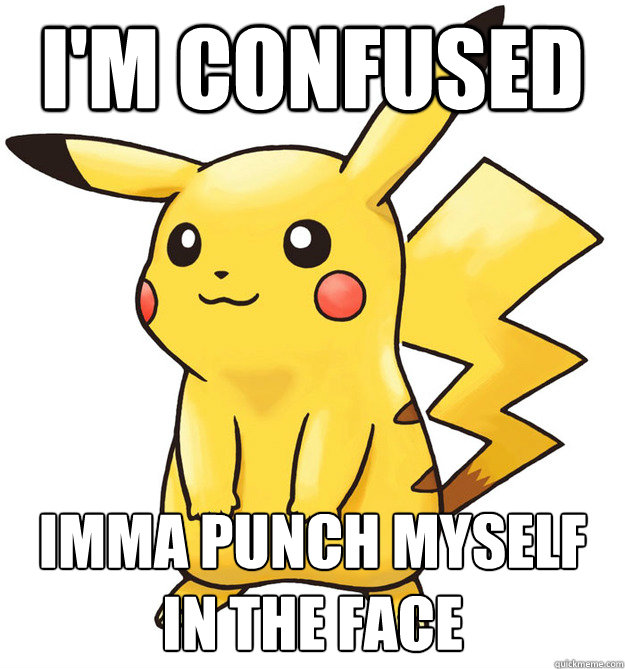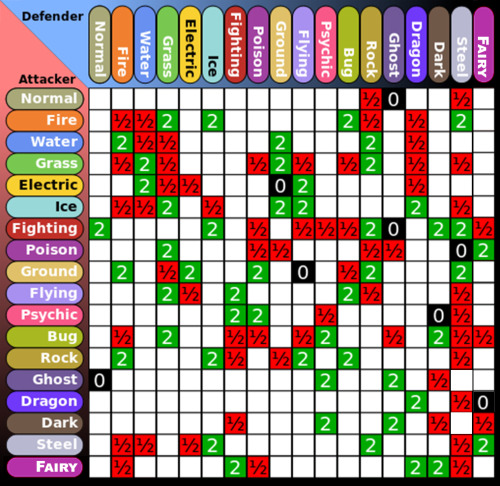Breeding the Perfect
One
Howdy
Last time we
wrapped up the basics, and if I missed something I’ve failed as a Trainer. This
time we’ll be getting more in depth with the Pokemon, like with breeding, EVs and
IVs, and how they play a role in competitive battling.
 |
| I'll just let this sink in |
Effort
Values and Individual Values (EVs and IVs)
·
Effort
Values – Additional points that are used to improve any of
a Pokemon’s given stat
o
A Pokemon can have up to 510 EVs and up to 252 EVs in any one stat
o
For every
4 EVs the Pokemon gains a stat increase
o
EVs are gained through battling Pokemon
or using Super Training
o
EVs CAN
be reset by using the Reset Bag in Super Training
·
Individual
Values – The stats a Pokemon is born with
o
A Pokemon can have up to 31 IVs (Perfect IVs) in any one stat
 |
| Gardevoir |
o
The higher the IVs the higher the stat,
and the lower the IVs the lower the stat
§ Ex:
A Lv. 100 Gardevoir with 31 IVs in Atk would have a 149 Atk stat, but if it had
0 IVs in Atk it would have a 121 Atk stat
o
IVs CAN’T
be reset
o
Breeding gives the most control over IVs
Pokemon that
haven’t been properly EV Trained and
don’t have Perfect IVs fall short to
Pokemon who are.
Breeding
In Pokemon X & Y if you want to battle
competitively you’re going to have to breed
your own Pokemon, and it can be very time consuming.
What
is breeding?
Breeding is
exactly what it sounds like, it’s making a baby. In Pokemon, breeding is far
superior than catching a Pokemon in the wild because breeding gives the trainer
a lot more control of how the Pokemon will come out. A wild Pokemon is all RNG* (Random Number Generator) so the
stats, ability, of nature could be good or bad, but by breeding the trainer can
pass down specific traits. With Pokemon X & Y breeding became a lot easier.
 |
| An Egg |
*RNG is
essentially luck, but in a techy sense because it’s data
Breeding
as I know it
To breed a, what
can be known as, Flawless Pokemon you’ll
need the nature you want on a
Pokemon, the ability you want on a
Pokemon, and perfect IVs in every
stat (maybe except the stat the nature lowers). Also, all Pokemon come from
eggs.
 |
| Ditto |
To get an Egg you’ll
need to place two Pokemon in the Day
Care.
Every Pokemon can’t breed with one another. You need a male and a female
Pokemon from the same Egg Group.
Not all Pokemon can breed. Pokemon from the Undiscovered
Egg Group can’t breed, and that includes Legendaries and baby Pokemon. Ditto
is the one Pokemon that can breed with all other compatible Pokemon. Once you
have the Egg it will take a certain number of steps
to hatch (this can be sped up with a Pokemon with the ability Magma
Armor or Flame
Body
in your Party).
·
The offspring of two different species
of Pokemon will always be from the same evolutionary chain as the female
·
The offspring of a Pokemon breeding with
Ditto will always be from the evolutionary chain of the Pokemon breeding with
Ditto
·
Breeding with two different species
allows access to Egg Moves, moves
that can’t be obtained normally by leveling up. (Check a Pokemon to see their
Egg Moves)
·
The ability the offspring Pokemon will
have is random
o
You
can pass down Hidden Abilities (HA), though it’s still
random. If you breed a male Pokemon that has a HA with Ditto you have a chance
of the offspring obtaining the HA.
Important
Items for Breeding
These items are
held by the breeding Pokemon in the Day Care
.png) |
| Destiny Knot |
| Everstone |
·
Destiny
Knot
– Passes over 5 IVs from either parent to the offspring
·
Everstone
– Passes the nature over from whatever parent was holding this
Breeding is the
only way to get a Flawless Pokemon, meaning you’ll need Perfect IVs. Instead of
me explaining it here’s a video
that helped me understand IV breeding.
 |
| This sums up breeding |
EV
Training
Once you have
your Pokemon with Perfect IVs it’s time to start training , but you can’t train
them on any Pokemon. Each Pokemon will give a certain amount of EVs after you
defeat them, and the EV depends on the Pokemon. Ideally you want to focus on
two main stats, but that doesn’t mean you have to.
·
Each Pokemon gives at least 1 EV to a
certain stat, but Pokemon can give up to 3. For example, Bellsprout gives 1 EV
to Atk, its evolve form Weepinbell gives 2 EVs to Atk, and lastly Victreebel
gives 3 EVs.
Examples of EV Training:
Most Attackers*
will EV Train their better attacking stat (physical or special) and their speed
stat, and most Walls* will EV Train their better defense stat (physical or
special) and their HP.
| Macho Brace |
*These are roles
Pokemon play I’ll discuss those in a later post
Important
Factors for EV Training
| Power Bracer |
·
Power
Items (Same from Breeding section) – Gives +4 (Macho
Brace gives +2) EVs of a certain stat to the total EVs of opposing Pokemon
·
Pokerus – Doubles the amount of EVs received
– Doubles the amount of EVs received
 – Doubles the amount of EVs received
– Doubles the amount of EVs received
·
Horde
Battles – This type of battle allows you to battle FIVE at
once, speeding up theprocess
o
With Horde Battles, Power Items, and
Pokerus a Pokemon can get a minimum of 50 EVs in a single battle
Because words
can be harder to follow than sound I feel I should have a video
explain how EV Training works.
Next
Time
To me EVs and
IVs are two of the main reasons people may be intimidated by competitive
battling, but once you have that figured out battling becomes more about
remembering information. With Pokemon Showdown you don’t have to breed or EV
Train, but I feel that takes some emotional connection away from the Trainer
and Pokemon. In the next post I want to finally start getting into the actual
Competitive Battling aspect, such as the tiers, rules, and possibly the roles
of Pokemon. I had a hard time with this, it took me a couple weeks to get a
basic understanding, but now it’s like second nature.



.png)


